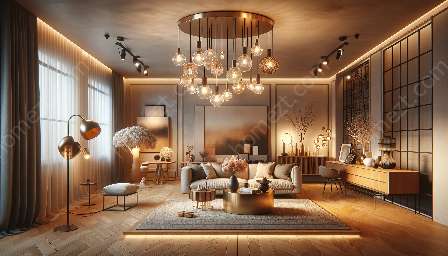Lighting plays a crucial role in creating an inviting and functional atmosphere within your home. By understanding the basic lighting principles and learning about lighting fixtures and installation, you can elevate the ambiance and aesthetics of your living spaces. Whether you're a homeowner, interior decorator, or design enthusiast, this guide will provide valuable insights into the world of lighting and its impact on homemaking and interior decor.
Understanding Basic Lighting Principles
1. Types of Lighting
There are three primary types of lighting: ambient, task, and accent. Understanding the differences between these types will help you create a well-balanced lighting scheme within your home.
2. Color Temperature
The color temperature of light can significantly impact the mood and ambiance of a space. Warmer tones create a cozy and inviting atmosphere, while cooler tones can make a room feel more lively and energetic.
3. Layered Lighting
Layering different types of lighting, such as overhead fixtures, lamps, and accent lights, can add depth and dimension to a room, creating a more dynamic and visually appealing environment.
Choosing the Right Lighting Fixtures
1. Consider Functionality
When selecting lighting fixtures, it's essential to consider the functionality of the space. Task lighting, such as under-cabinet lighting in the kitchen, should be chosen to serve a specific purpose.
2. Style and Design
The design and style of lighting fixtures should complement the overall aesthetic of the room. Whether you prefer modern, traditional, or eclectic decor, choosing fixtures that align with your style will enhance the visual appeal of the space.
3. Energy Efficiency
Opting for energy-efficient lighting fixtures not only reduces your energy consumption but also contributes to a sustainable and eco-friendly home environment.
Installation and Placement Tips
1. Follow Safety Guidelines
When installing lighting fixtures, it's crucial to adhere to safety standards and follow the manufacturer's instructions to ensure proper installation and functionality.
2. Proper Placement
The placement of lighting fixtures can significantly impact the overall lighting design. Consider factors such as height, distance, and angles to achieve the desired lighting effects.
3. Dimmer Switches
Installing dimmer switches provides flexibility in controlling the intensity of light, allowing you to create various moods and ambiance within the space.
Harmonizing Lighting with Homemaking Decor
1. Reflecting Personal Style
Lighting fixtures serve as decorative elements that reflect your personal style and preferences. Incorporating fixtures that align with your decor theme enhances the overall visual appeal of your home.
2. Creating Focal Points
Strategic placement of lighting fixtures can draw attention to key features or artwork within a room, serving as focal points that elevate the decor and aesthetics of the space.
3. Enhancing Comfort and Functionality
Proper lighting design contributes to the comfort and functionality of your living spaces, making your home a welcoming and enjoyable environment for everyday activities and relaxation.
Conclusion
By grasping the basic lighting principles and integrating them with the selection of fixtures, installation techniques, and homemaking decor, you can transform your living spaces into inviting, aesthetically pleasing environments. Embracing the art of lighting design opens the door to endless possibilities for enhancing the ambiance and functionality of your home.


